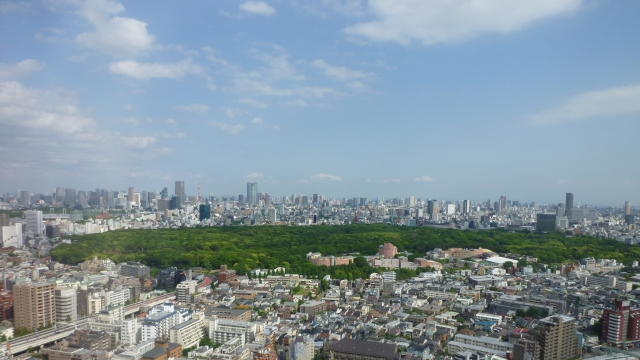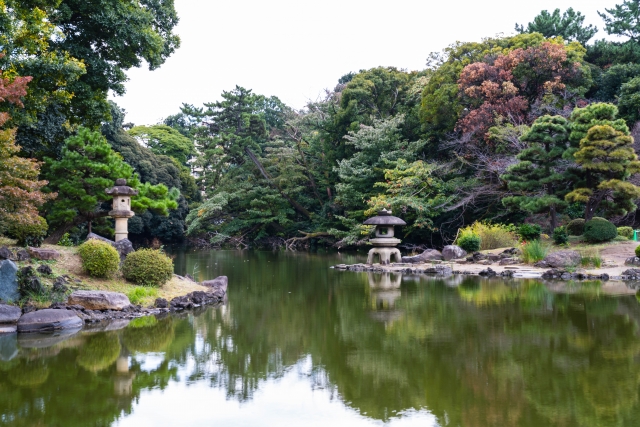Tokyo is a city celebrated for its energy: neon billboards, bustling train stations, endless shopping streets, and nightlife that stretches into the early hours. Yet, amid this vibrancy lies an oasis of calm and beauty: Shinjuku Gyoen National Garden. Spanning over 58 hectares and home to approximately 20,000 trees, this park is one of the city’s most cherished green spaces. For both locals and international visitors, Shinjuku Gyoen offers a chance to slow down, connect with nature, and experience Japanese garden culture at its finest.
Shinjuku Gyoen is a peaceful oasis in the heart of Tokyo, where traditional Japanese, English, and French gardens come together beautifully.
A Historical Landscape with Imperial Ties

Shinjuku Gyoen’s history stretches back to the Edo period. Originally the private estate of a feudal lord, the land was later converted into an experimental agricultural center before becoming an imperial garden in 1906. For decades, it served as a retreat for the Imperial Family and a venue for hosting distinguished guests. After World War II, the garden was opened to the public, transforming it into a space of cultural and recreational importance.
Today, Shinjuku Gyoen stands as a national garden, beautifully blending tradition and modernity. Its design reflects a combination of Japanese, English, and French landscape styles, making it a rare example of cross-cultural garden architecture.
Three Gardens in One
One of the most distinctive aspects of Shinjuku Gyoen is the way it harmoniously combines three different garden styles:
- Japanese Traditional Garden
- This area is perhaps the most serene, with winding paths, reflective ponds, stone lanterns, and teahouses. The design emphasizes seasonal beauty and invites visitors to appreciate subtle changes in the landscape. In spring, cherry blossoms hang gracefully over the water, while in autumn, the reflection of fiery red maples creates a picture-perfect scene.
- French Formal Garden
- Known for its symmetrical layout and long avenues lined with plane trees, this section exudes European elegance. Seasonal roses bloom vibrantly here, filling the air with fragrance and color. The garden’s geometry contrasts beautifully with the more organic flow of the Japanese section.
- English Landscape Garden
- With expansive lawns surrounded by groves of trees, this part of the park feels open and spacious. It’s a favorite spot for picnics, relaxation, and quiet reading, providing a Western-style green space rarely found in central Tokyo.
The combination of these three styles creates a unique and diverse environment where visitors can move seamlessly from one cultural atmosphere to another.
A Haven for Cherry Blossom Viewing
Shinjuku Gyoen is particularly famous as one of Tokyo’s premier spots for hanami, or cherry blossom viewing. The garden features more than 1,000 cherry trees of various species, which bloom in stages from late March to late April. This extended blooming period makes it possible for visitors to enjoy cherry blossoms longer here than in many other locations.
During hanami season, families, couples, and groups of friends gather under the pink canopies for picnics. Unlike some of Tokyo’s busier parks, Shinjuku Gyoen enforces rules to maintain a peaceful atmosphere, such as restrictions on alcohol, ensuring that the focus remains on the beauty of the blossoms.
In addition to cherry blossoms, Shinjuku Gyoen is equally stunning during autumn, when maple and gingko trees fill the garden with brilliant shades of red, orange, and gold. Each season transforms the park, making it a year-round destination.
The Greenhouse and Seasonal Flowers
Beyond its outdoor landscapes, Shinjuku Gyoen also features a large greenhouse, originally built in the 19th century and later reconstructed. Inside, visitors can explore a wide variety of tropical and subtropical plants, including orchids, lilies, and rare species from around the world. The greenhouse highlights Japan’s dedication to botanical research and preservation.
Throughout the garden, seasonal flowers add vibrant color. In spring, azaleas and wisteria delight visitors, while summer brings hydrangeas and lotuses. Autumn is celebrated with chrysanthemums, which are displayed in intricate arrangements during annual exhibitions.
Teahouses and Japanese Cultural Experiences
For those interested in traditional Japanese culture, the garden’s teahouses provide a special experience. Visitors can enjoy matcha (powdered green tea) and sweets while overlooking a landscaped pond. This quiet moment of hospitality connects guests to the Japanese spirit of harmony and respect for nature.
The teahouses also serve as reminders of the garden’s imperial heritage, where such spaces were once used to host dignitaries and showcase Japanese traditions to international guests.
Accessibility and Visitor Experience
Shinjuku Gyoen is remarkably accessible, located just a short walk from Shinjuku Station, one of the busiest transportation hubs in the world. Despite its proximity to skyscrapers, shopping malls, and entertainment districts, stepping into the garden feels like entering another world.
The park is meticulously maintained, with wide walking paths, benches, rest areas, and clear signage in multiple languages. Admission is affordable, and the rules ensure a calm, family-friendly atmosphere. For photographers, the garden offers endless opportunities to capture both sweeping landscapes and delicate seasonal details.
Nearby Attractions
Because of its central location, Shinjuku Gyoen can easily be combined with visits to nearby attractions. Just outside the park lies Shinjuku, a district known for its shopping, nightlife, and towering skyscrapers. Visitors can enjoy panoramic views from the Tokyo Metropolitan Government Building or explore Kabukicho, the city’s most famous entertainment quarter. This contrast between the tranquility of Shinjuku Gyoen and the energy of the surrounding area highlights the diversity of Tokyo.
Why Shinjuku Gyoen Matters
For Tokyo residents, Shinjuku Gyoen is more than just a park—it is a sanctuary. It represents the balance between modern urban life and the timeless need for nature and reflection. For travelers, it is an opportunity to experience Japan’s garden culture in a setting that also embraces international influences.
Whether you are enjoying a leisurely walk, admiring seasonal flowers, or simply resting on the lawn, Shinjuku Gyoen encourages visitors to slow down and appreciate beauty in its purest form. It is a place where families bond, couples stroll hand in hand, and solo travelers find inspiration.
Conclusion: A Garden for All Seasons
Shinjuku Gyoen National Garden is one of Tokyo’s must-visit destinations. Its rich history, diverse garden styles, seasonal beauty, and accessibility make it a place that appeals to everyone. Unlike many tourist spots, it offers not just sights but also an experience—a chance to pause, reflect, and connect with nature at the heart of one of the busiest cities in the world.
For those planning a trip to Tokyo, a visit to Shinjuku Gyoen promises more than just beautiful scenery. It provides a memory of peace and harmony that lingers long after leaving the city’s bustling streets.



comment